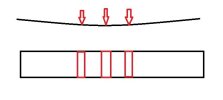- Joined
- Aug 7, 2024
- Messages
- 64
I have a few random knife making questions to ask this community.
1. Can someone explain to me or show me a good instructional video on how to use a buffing wheel properly? I want to clean up my finished knives but I have had issues trying to buff metal. I am looking for instructions that you’d give a seven year old.
2. I treated myself to some Alabama Damascus and two of the blades got warps in them after quench and placing in cold vise to straighten. Any suggestions to fix warp before temper cycle?
3. First time etching Damascus, I have two bottles ferric cloride. What’s best dilution method for a good etch?
1. Can someone explain to me or show me a good instructional video on how to use a buffing wheel properly? I want to clean up my finished knives but I have had issues trying to buff metal. I am looking for instructions that you’d give a seven year old.
2. I treated myself to some Alabama Damascus and two of the blades got warps in them after quench and placing in cold vise to straighten. Any suggestions to fix warp before temper cycle?
3. First time etching Damascus, I have two bottles ferric cloride. What’s best dilution method for a good etch?


